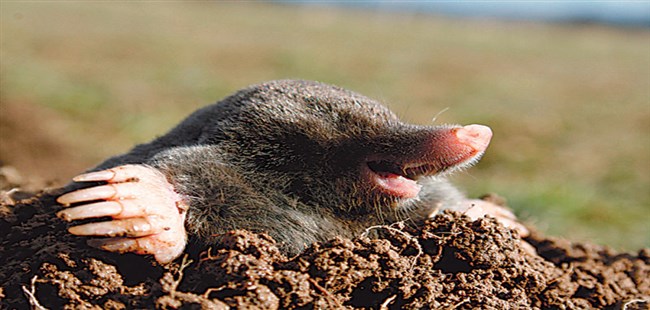Many animals are likely to come into a garden, including birds and other wildlife, as well as domestic animals such as cats and dogs. These are often harmless but may need to be deterred if they cause any damage.
Controlling Birds
Most birds are welcomed by gardeners, but some, such as finches, eat fruit tree buds and the buds of ornamental shrubs and trees during late autumn and winter. Others, such as blackbirds and thrushes, eat ripening fruits, while starlings may pull up seedlings.
Using Panty Hose
Use an old pair of pantyhose to protect ripening squash from birds and other pests. Pull a leg section over each squash, and tie at each end.
Using Hose
Use an old hose to deter large pests such as birds and cats. Lay it in a bed, and bend the hose in a couple of places so that it resembles a snake.
Deterring Birds
• Humming tape Keep birds away from crops by using thin strips of commercial buzzing or humming tape stretched between posts. As the wind blows, the vibrating tape produces a sound that deters many birds. The tape from the inside of a broken music cassette is a useful alternative.
• Netting Drape netting over crops, but check regularly to ensure that no birds or other animals are trapped in it.
• Fake cats Make cutout cats, using marbles for eyes. Hang these in vegetable plots.
Controlling Moles
Moles create unsightly mounds of loose soil in flower beds and on lawns. Their underground activity loosens the soil. This can cause plants to suffer from drought stress because their roots can absorb water only from firm soil.
Using Smells
• Smoke Consider using commercial mole smokes that are placed inside, or at the entrance to, a mole tunnel. Although these are often effective, the mole may return once the smoke has dispersed.
• Strong smells Put household items such as strong-smelling scents, mothballs, and orange peels inside a mole tunnel. Plant smells Try planting caper spurge, (Euphorbia Lathyrus) the smell of which seems to be intensely disliked by moles.
Planting bottles
Dig several holes, and push an empty bottle into each one. As the wind blows across the top of each bottle, it will produce a noise that drives away moles.
Creating Sounds
• Windmills Push plastic toy windmills into the ground at regular intervals. The noise they make as they spin in the wind can often deter any nearby moles.
• Using ultrasound Try using electronic devices that emit ultrasonic waves. These seem to work in some cases.
Using Professionals: Last resort If all else fails, employ the services of a reputable exterminator to deal with die problem for you.
Controlling Rabbits And Mice
Both rabbits and mice can cause considerable damage in gardens and greenhouses. Rabbits particularly enjoy vegetables, fruit, and tender young shoot growth, while mice are particularly fond of fruit, vegetables, and seeds – especially when other food is in short supply.
Protecting Crops and Trees from Rabbits
Making A Rabbit Fence
Make a rabbit-proof barrier with galvanized chicken wire that is at least 3 ft (90 cm) high. Bury about 1 ft (30 cm) below the soil. Angle the bottom 6 in (15 cm) outward so that rabbits cannot tunnel underneath it.
Making A Tree Guard
Rabbits may gnaw at tree bark, particularly on young trees. To prevent this, wrap a collar of chicken wire around a trunk. Check the wire at least once a year to make sure that it is not restricting trunk expansion.
Curbing Mice
• Conventional traps Use mousetraps in greenhouses, plastic tunnels, and cloches if mice are a serious problem. This is also the most effective way of controlling mice that are raiding seeds stored inside a shed or garage.
• Humane traps These trap mice, but do not kill them, which means that you can dispose of the mice humanely. If released several miles from your garden, they are unlikely to trouble you again.
• Feline solution If you do not mind dead mice being brought into the house from time to time, a cat may help to control this pest.
Controlling Cats and Dogs
Domestic animals can prove to be some of the worst pests in the garden. If at all possible, try to deter them from going into the garden in the first place. If this fails, there are a number of solutions to some of the problems that cats and dogs can cause.
Deterring Cats
Positioning bottles;
Cats seem to strongly dislike the reflections from clear plastic bottles half-filled with water. To keep cats away from areas that they use as a litter box, place these bottles am^ng plants. This can look unsightly but may force cats to look for another litter area.
Using Other Methods
• Moist soil: Keep soil moist to deter cats. Water regularly, and use a moisture-retentive mulch whenever possible.
• Chicken wire: Buried chicken wire may prevent a cat from digging up soil where seeds have been recently sown. Lay the wire on the ground surface, and cover it lightly with soil.
• Buried prickles: Buried prickly stems, such as holly, are often enough to deter a cat as soon as it begins to scratch up the soil.
• Electronic devices: Use these to deter cats and dogs; they emit a high-frequency sound that humans cannot hear, but cats and dogs dislike it.
Keeping dogs out
Stop a neighbor’s dog from crawling under or through a fence into your garden by planting a prickly hedge. Shrubs such as Pyracantha work well. Plant them so that they will grow to form an impenetrable barrier.






